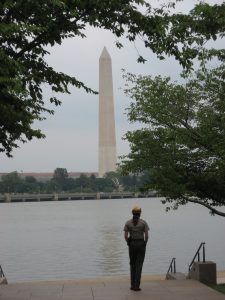
Between 2009 and 2011, I had the pleasure to serve as project manager for team of historians–Marla Miller, Gary Nash, David Thelen, and Anne Whisnant–assessing the state of history within the National Park Service (NPS). The Organization of American Historians, working in partnership with the NPS, had engaged this team to take a comprehensive view of the national park system and its success at conveying the story of the nation’s history; reflect on ways the agency might improve upon its efforts; and write a report that would serve as a road map as the National Park Service move towards its centennial in 2016.
It was a special privilege to have a behind-the-scenes view as this amazing crew of historical thinkers grappled with the very real issues and constraints face by the NPS in protecting and interpreting cultural resources. The team’s report, Imperiled Promise: The State of History in the National Parks, was released in 2011, and I’m pleased to say that thus far it has avoided the fate of many government reports that end up languishing on office shelves a few months after their release. Instead, Imperiled Promise has sparked a s

ubstantive effort on the part of the NPS and its supporters to implement the team’s recommendations and use the report as a launching point for a reinvigorated agency that respects the role both rangers and historians play in protecting and interpreting the nation’s historic treasures.
The report’s authors won an award in 2013 from the National Council on Public History, which stated that the report’s “incisive analysis supplies an agenda that will guide the practice of history in the NPS for decades to come.” More recently, Rutgers University–Camden last month hosted a symposium on the State of History in the National Park Service (#HistoryNPS), designed to continue the conversation begun by the report. Now, the blog History@Work has published a three-part series reflecting on the gathering called “Collegial Questioning: A New Forum on History in the U.S. National Park Service.” Check it out!
I am proud of my small contribution to this conversation, and I encourage the National Park Service to continue its efforts to build upon Imperiled Promise to provide an even richer field in which the public can explore the nation’s past.
